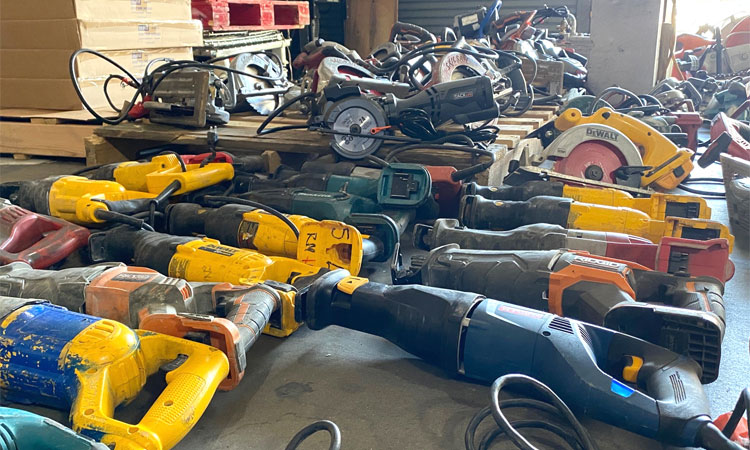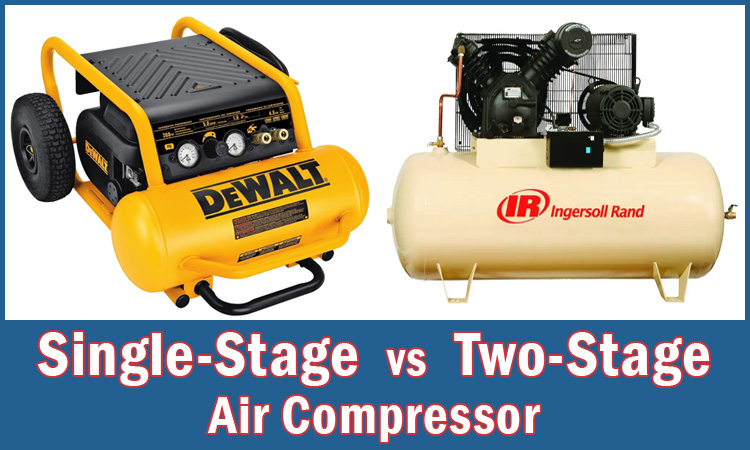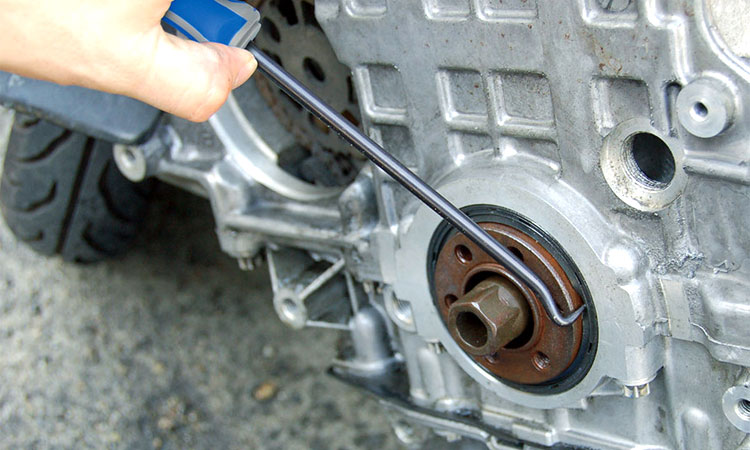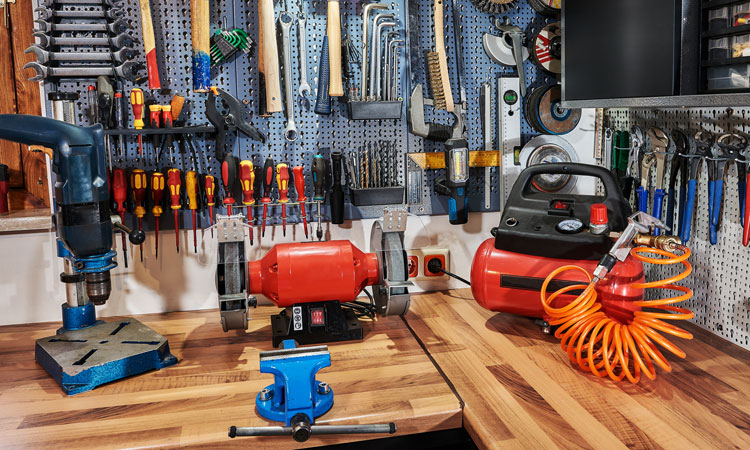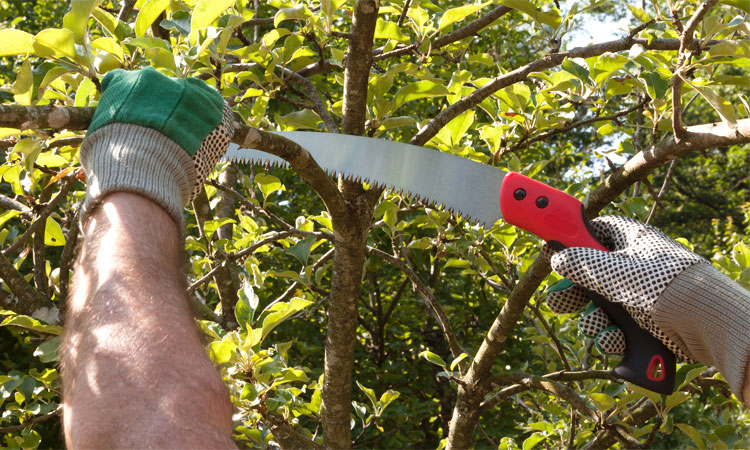40 Different Types of Wrenches and Their Uses
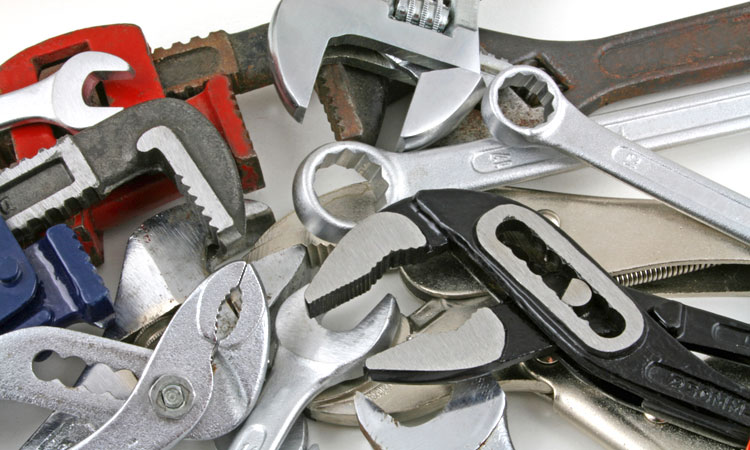
Wrenches are among those everyday tools that you might overlook until it’s needed. You may often grab whatever wrench is nearby to tackle the project you face. But there are actually quite a few different types of wrenches out there, and many are specially designed to handle a specific task.
Wrenches are generally either male or female. Male wrenches are inserted, much like the head of a screwdriver. Female wrenches have a socket which fits over or around the object they will be turning. Both are used to loosen or tighten nuts, bolts, screws, and even mechanical caps and casings.
The following 40 types of wrench encompass the gamut of styles and functions, although there are more wrenches out there that are extremely rare or specialized.
Classes of Wrench
There are a few common terms used to classify wrenches into subgroups. While knowing these terms will give you a better idea of a wrench’s purpose, they are all interchangeable with the broad term of “wrench” (example: Allen wrench vs. hex key).
Key – Keys are usually very specialized and most often appear as an old-fashioned key without teeth or as a T-shaped socket that may have a male or female tip. Allen wrenches, bottle openers, and window cranks are all types of key wrench.
Socket – Socket wrenches may refer to either a single piece or a handle which attaches to cylindrical sockets. The socket fits over the head and turns either vertically or horizontally, depending on the handle’s orientation.
Spanner – Spanners are wrenches used to turn a spanner head and have a design that has pins or hooks instead of a normal end. The term is most commonly used in British English to describe wrenches in general, although it has seen some use in the US as a subgroup of wrench. For more information, see below.
Common Wrench Types
Chances are, you have at least one of these somewhere in your home. The average toolkit will have several. Many of these wrenches will have a range of uses, as opposed to the less common ones discussed later.
Adjustable Wrench

For this reason, it can perform the same basic function as an entire set of combination or open-ended wrenches, although it requires more space due to its thicker size.
Allen Wrench

Also referred to as a hex key, this hexagonal piece of metal may be either L-shaped or T-shaped with the extra limb functioning as a handle.
As a male-style wrench, this fits into the heads of screws and bolts that have a hexagonal recess. Allen wrench sets usually come in either SAE or Metric sizes.
Box-Ended Wrench

The closed ends are designed to fit either hexagonal or square bolts, and are different in size. Box-ended wrenches are frequently sold in sets.
Combination Wrench

If box-ended wrenches and open-ended wrenches had children, the combination wrench would be the result. One side is a closed loop for hexagonal or square nuts, while the other end is an open U-shape.
Used most often for difficult nuts, the closed end loosens the nut so that the open end can be used to quickly unscrew it. Like sockets, combination wrenches are usually sold in sets containing a variety of wrench sizes.
Crowfoot Wrench
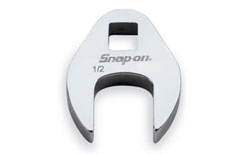
They work great for handling bolts located deeper on a machine’s body when you don’t want to remove nearby parts first.
Impact Wrench
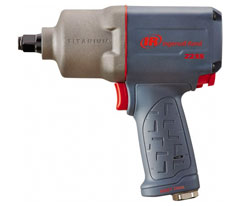
More closely resembling a cordless drill in appearance, air impact wrenches use an air compressor while cordless impact wrenches use a rechargeable battery. The former are sometimes called air wrenches or air guns.
Part of the socket family, this wrench can apply high torque to remove stubborn nuts or bolts. They are a great choice for handling multiple nuts (such as when mounting wheels on a car), although they are a poor choice for any job that requires precision.
See Also: Impact Wrench vs Impact Driver (Comparison)
Lug Wrench
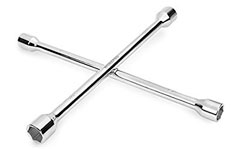
They are used to tighten or loosen lug nuts on cars, earning them the nickname of “wheel brace”.
The longer the lug wrench, the more torque can be generated when applying force to either tighten or untighten. Works similar to a breaker bar with a socket at the end.
Oil Filter Wrench
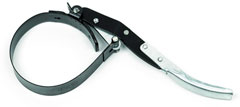
Chain strap and metal strap styles use a loop to wrap around the filter casing, while the more recognizable claw wrench functions similarly to an adjustable wrench.
Finally, socket-style filter wrenches resemble a cup with parts of the sides cut away. These fit onto the bottom of a filter cap, and are used with a ratchet handle.
Open-Ended Wrench

The downside is that they are more likely to round the edges of a nut than box-ended wrenches.
Pipe Wrench

Ratcheting Wrench
(see our pick for best ratcheting wrench set)
Similar to open-ended wrenches, box-ended wrenches, and combination wrenches, ratcheting wrenches have at least one end that has a ratcheting device inside of it.
This allows you to turn the wrench to tighten or untighten without having to remove and readjust the position if the wrench handle hits an obstacle after each turn. It makes working in tight areas a lot easier.
Socket Wrench

The foundation for any socket set, a socket wrench (or ratchet) uses a ratcheting mechanism to allow you to quickly tighten or untighten nuts or bolts without lifting the wrench off the fastener.
Available with 1/4″, 3/8″ (most common), 1/2″, and 1″ drives, you simply fit the correct size socket that you’ll need, on top of the drive. If the handle meets an obstacle while being turned, you can simply reverse course to give yourself room and then continue working.
Torque wrench
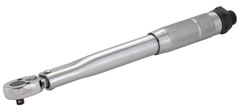
This socket wrench is designed to deliver a specific amount of torque without overtightening. This amount can be calibrated, and different types are available (including manual, digital, and other variations).
It’s most commonly used for automotive work such as tightening wheel lug nuts. Torque sticks may be quicker but not as accurate.
A torque wrench can also be used on bicycles, farming equipment, or any instance where tightening a nut or bolt to a specific torque specification which is usually set by the manufacturer.
Other Wrench Types
While you might have heard someone mention these specialty wrenches, chances are you’ve never owned one. They tend to be used for very specific tasks, or are simply no longer in common use outside of a few industries.
Alligator Wrench
Once the big daddy of wrenches, the alligator wrench was named due to the way it gripped nuts. The top of the jaw is serrated, while the bottom is smooth.
The handle looks more like a pointy fang than its modern cousin, the pipe wrench. As these were designed mainly to handle square-shaped heads, it has become rare to see them outside of movies.
Armorer’s Wrench
This single-piece wrench has a C-shaped, serrated head and may include square slots and/or a hole to attach a ratchet handle.
Used for gun repair and maintenance, they are available in a range of designs and are usually sized to fit specific types or models of gun.
Basin Wrench
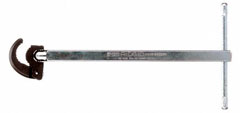
Bionic Wrench
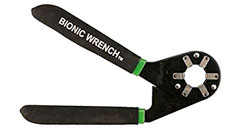
When placed around the target head, the two handles can be squeezed, causing the hole to tighten and grip the head firmly, making this an adjustable box-ended wrench.
Bung Wrench

Special “sparkless” versions are available when dealing with flammable materials.
Cone Wrench

It’s mostly used for bicycles or adjusting the leveling feet of washing machines, but sometimes employed on other gentle projects where a normal open-ended wrench is too thick.
Die Stock Holder Wrench

Dog Bone Wrench

These are used almost exclusively for bike maintenance, although their ability to fit into small spaces has occasionally made them useful elsewhere. Some dog bone wrenches have swivel heads for even more flexibility.
Drum Key
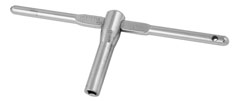
Drum keys with longer handles allow you to apply more torque than the shorter handles.
Fan Clutch Wrench

Some also have a squared opening at the other end, allowing them to double as a clutch holding tool while a second wrench is used to turn the hex nut.
Fire Hydrant Wrench

The end is typically adjustable and this wrench is known for its long handle to allow the user to apply more torque.
Flare Nut Wrench

These wrenches are especially useful on softer metals prone to damage from open-ended wrenches, such as those used in plumbing.
Garbage Disposal Wrench
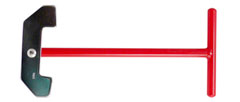
For handling the large nuts, a second type of flat wrench with a squat, pivoting U-shaped head is used. This latter can also be used to dislodge clogs in the cutter heads, just like the allen variant.
Hammer Wrench

It’s commonly used to help tighten large flange fittings and fasteners.
Hammer wrenches can also be used to help release stuck or rusted nuts and bolts through high force. This heavy duty wrench is used in certain metalworking, plumbing, or electrical jobs.
Monkey Wrench

Its association with sabotage heralds from its former role as a standard tool in most industrial branches.
Pedal Wrench

Pliers Wrench

The bolt can slide between two or more positions of an opening on the upper jaw, allowing the wrench to be adjusted to fit different sizes of head. The name comes from the way this tool is gripped, which is the same as a pair of pliers.
Plumber’s Wrench

Spanner Wrench

These have pins which allow them to be used on a variety of items, from spanner head screws to retainer rings.
Spark Plug Wrench

Many socket sets these days include a 1-2 spark plug sockets so check your sockets first before buying a standalone wrench.
Spoke Wrench

Due to the size and shape, this wrench can be rotated in a full circle without having to remove it.
The most common place to find this tool is a bike repair shop. Some variations more closely resemble a tiny open-ended wrench, while others look more like a piece of curved, flat metal.
Spud Wrench

It has since been made obsolete by the plumber’s wrench, although it can still be found in the occasional toolbox.
Strap Wrench

Stubby Wrench

Some newer versions also have a hinge along the handle to allow either end to be angled for even more precise use.
Tap Wrench
This key fits the square drive of taps, which are used in cutting female threads (such as those inside a nut).
The shape of these wrenches may be either T-shaped or a double-handled bar with the attachment socket in the middle.
Tension Wrench

They can be rigid or flexible and are used to apply tension while the pick does its job.
If you’ve ever seen someone picking a lock in a movie or video game and wondered why they only moved one of the two tools, the stationary one is the tension wrench.
Torx Key

While they can be purchased in the same L-shape as the average allen, you can also purchase these in a housed set that more closely resembles a swiss army knife than a wrench set.



